From DNA origami to osseointegration, here are the big ideas that took giant leaps this year 2010. Get to know them now, before you touch a piezoelectric display or buy your first ultracapacitor.
1. Anthropomimetic Machines
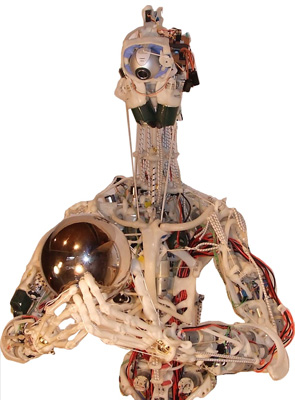
No matter how closely a robot resembles a human on the outside, if you crack it open, the jumble of wires is unlikely to bear much resemblance to our insides. A group of European researchers aims to bridge that gap–its robot prototype is anthropomimetic, meaning it mimics the human form. There’s a skeleton made of thermoplastic polymer, actuators that correspond to each muscle and kiteline as tendons. The goal is to create a more human-like robot that interacts with and responds to environments the way we do.
2. Direct Carbon Fuel Cell
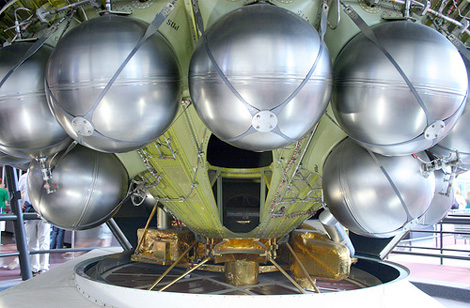
Fuel cells, like those seen here on Spacelab, require a hydrogen infrastructure.
Coal is dirty, and fuel cells run on hydrogen–that’s the conventional wisdom. But a new generation of “direct carbon” fuel cells challenges that. Instead of relying on hard-to-produce hydrogen, these cells pull their power from an electrochemical reaction between oxygen and pulverized coal (or some other source of carbon, like biomass). The advantage: carbon-based energy production that requires no combustion, allowing it to operate at about twice the efficiency of a typical coal-fired power plant. California-based Direct Carbon Technology expects to have a 10-kilowatt prototype running on biomass in 2010, while Ohio-based Contained Energy hopes soon to use the tech to power a small light bulb. Eventually, the companies hope to build modular fuel cells that can be stacked in order to create new small-scale power plants or add clean capacity to existing plants.
3. Metabolomics
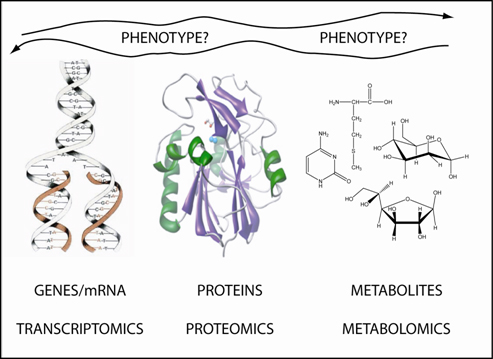
For the past five years, scientists at the University of Alberta in Edmonton have been working on the Human Metabolome Project, a database of the 8000 naturally occurring metabolites (that is, small molecules involved in chemical reactions in the body), as well as 1450 drugs, 1900 food additives and 2900 toxins that turn up in blood and urine tests. With this information, researchers can analyze a patient’s metabolomic profile, allowing them to tell from a drop of blood or urine whether somebody likes chocolate–or is likely to develop a life-threatening disease. Today, these tests require million-dollar pieces of equipment that are mostly confined to research labs. The Project’s database, which was first released in 2007, is already being used in commercial applications such as drug discovery and disease diagnosis, making quick and easy tests for personalized health and medical guidance possible.
4. DNA Origami
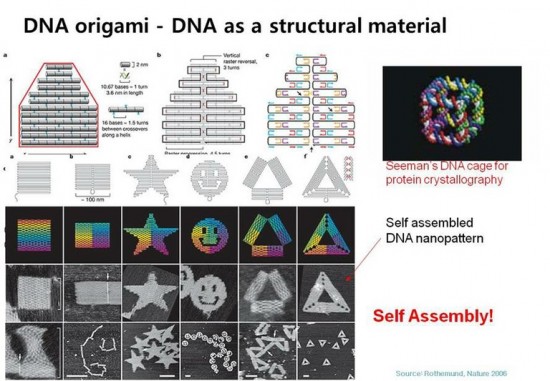
Scientists at Caltech have been folding microscopic strands of DNA into interesting shapes for the past few years. A cool party trick for sure, until a breakthrough last summer suggested that the folded strands could be used to create ultrasmall computer chips. That’s when the scientists teamed up with IBM researchers and showed that they could strategically position folded DNA shapes, such as triangles, along the sort of silicon wafer used in microchips. This should allow them to use pieces of the DNA strands as anchor points for tiny computer-chip components that could be built as little as 6 nanometers apart–a huge improvement over the current standard of 45 nm.
5. Piezoelectric Display

Scientists have long known about naturally occurring piezoelectric materials, which have the ability to transform electrical energy into physical stress and vice versa. But by building the property into electronic displays, companies can now create screens that can change shape or texture. This year, the technology is expected to make the leap into mainstream consumer products, offering the potential for mobile devices with screens that can harden protectively when turned off, and soften into a depressible touchscreen when turned on.
6. Osseointegration

The ideal prosthetic limb would behave like part of the natural body. Osseointegration allows prosthetics to fuse with a patient’s living bone–it works by taking advantage of the fact that bone cells attach to titanium instead of rejecting it. The technique has already been used for small-scale dental and facial implants, and researchers are now bringing it to full-scale limb prosthetics. After a successful lower-leg implant in 2008 on a German shepherd named Cassidy, veterinary surgeons at North Carolina State University have six more leg operations on amputee dogs planned for 2010, and are considering a case involving an ocelot at the North Carolina Zoo. But the big challenge ahead is to implement the technology in human limbs.
7. Horizontal Drilling

Trillions of cubic feet of natural gas in the United States lie buried within layers of shale as much as 11,000 feet deep. Much of this gas is inaccessible through ordinary wells–the dense rock makes it flow too slowly. The answer: wells that drill vertically down to the shale bed, then make a gradual 90-degree horizontal turn through the shale deposit. It’s an old idea, but higher energy prices and better technology have suddenly made it a hit. In 2008, Chesapeake Energy deployed 14 horizontal drilling rigs in the South’s massive Haynesville Shale deposits, and they expect to have 40 rigs up by the end of 2010.
8. Kinetic Hydropower
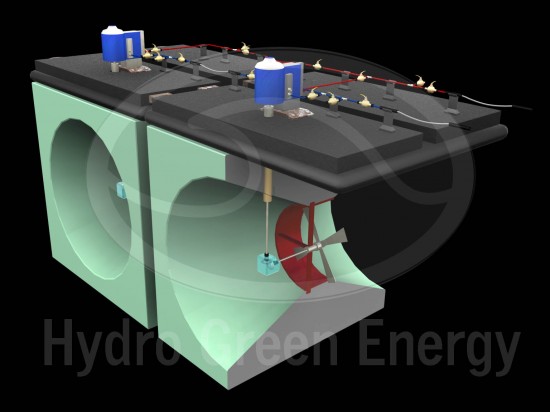
Traditional hydroelectricity requires dams–massive engineering works that remake local landscapes and ecosystems. A less intrusive solution: kinetic hydropower, which uses underwater turbines to capitalize on the natural flow of rivers and tides. Since 2006, Verdant Power has been testing six underwater turbines in New York’s East River to prove the technology’s potential. In 2010, the company expects to receive licensing for a major build-out of 30 underwater turbines in the river, to the east of New York’s Roosevelt Island, that will feed 1 megawatt of power into the grid. Other projects around the world are expected to complete testing soon and begin full-scale operation, including three installations that tap some of the highest tidal ranges in the world, in Canada’s Bay of Fundy.
9. Nanoyarn
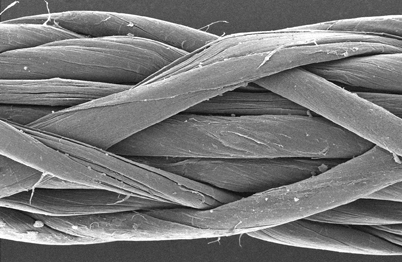
Carbon nanotubes have been touted as the next big thing ever since their discovery in 1991. The appeal lies in their strength (they are up to 100 times stronger than steel) and their ability to conduct both heat and electricity. But, until now, they’ve been too difficult to manufacture in useful quantities. That’s finally changing: New Hampshire-based Nanocomp Technologies is weaving nanotubes into lengths of yarn that can be built into commercial applications. The company recently delivered more than 6 miles of nanoyarn to a major aerospace client, and successful bullet-stopping tests last spring have the Pentagon excited about the prospect of next-gen body armor that’s both lighter and thinner than Kevlar.
10 Ultracapacitors
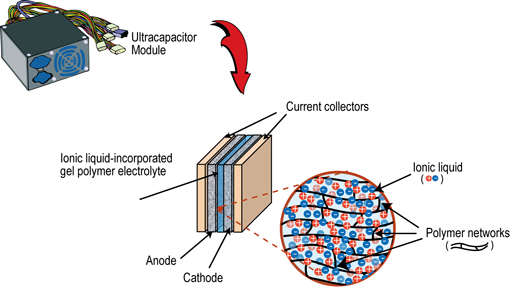
The biggest challenge for electric cars is energy storage: Batteries are better than ever, but they are still expensive, slow to charge and have fairly limited life spans. The solution may be ultracapacitors, which hold less energy than batteries (at least as the technology currently stands) but have virtually none of their drawbacks. That means longer life spans, no messy chemical reactions, no issues with battery memory and far greater durability. Researchers have been trying to perfect automotive ultracapacitors for several years (MIT is working on nanotube-based ultracaps, while Argonne National Laboratory is exploring battery-ultracap hybrids), but the big move could come from the secretive Texas-based company EEStor, which announced in April that its barium-titanate design had passed a crucial test. Though the company’s claims have aroused skepticism, EEStor’s automotive partner, ZENN Motors, is hyping the release of an ultracapacitor-powered car in 2010.


0 comments:
Post a Comment